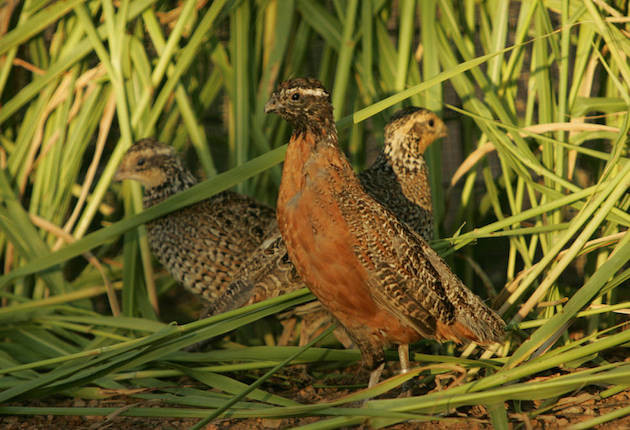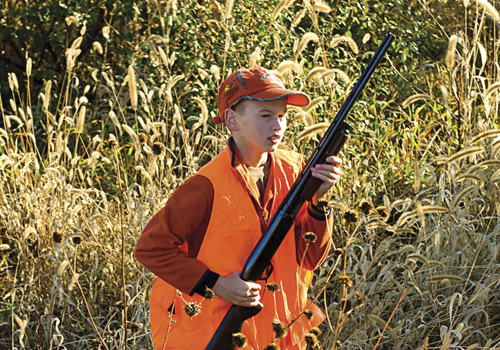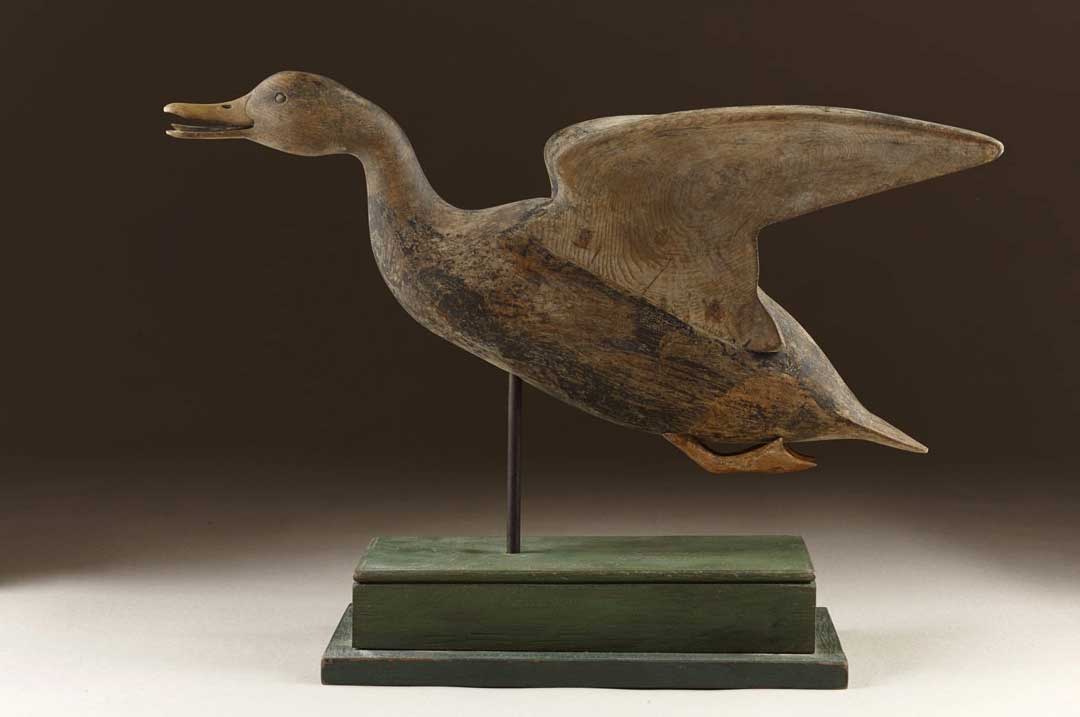Quail conservation is much like planning for your retirement. A diversified portfolio carries less risk for your nest egg in the event of economic downturns.
Recessions happen — you can count on that. To weather those storms, you must plan ahead to spread risk in your investments to absorb losses in the market. To do otherwise, you risk losing it all.
And so it is with masked bobwhite quail, the only quail in the United States considered endangered with extinction. A recent action diversifies the conservation portfolio and lessens the risks the rare bird faces.
The U.S. Fish and Wildlife Service — Southwest Region, developed a partnership with Africam Safari, an accredited zoological facility in Puebla, Mexico, near Mexico City, to hold what is now a second captive brood stock of the handsome quail. The state-of-the-art facility was dedicated in March 2016, and holds 140 adult masked bobwhite quail. The other captive brood stock is held at Buenos Aires National Wildlife Refuge southwest of Tucson, Arizona.
Here’s why the diversification is needed. The masked bobwhite quail is native only to a small sliver of southern Arizona and south of the border over a large swath of Sonora. It has wended a path of twists and turns that no other quail species has traveled. The bird was discovered late and has suffered from habitat loss. By the time it was described for science in 1885, it was already a rare bird.
According to accounts of many observers, it was considered extinct by the 1920s. Fortuitously, populations of birds were rediscovered in Sonora in the 1960s. Scientists trapped and relocated coveys into formerly occupied areas in Arizona and Sonora — actions that met with limited success. In 1968 scientists developed a captive brood stock at Patuxent Research Refuge in Maryland to help hold extinction at bay.
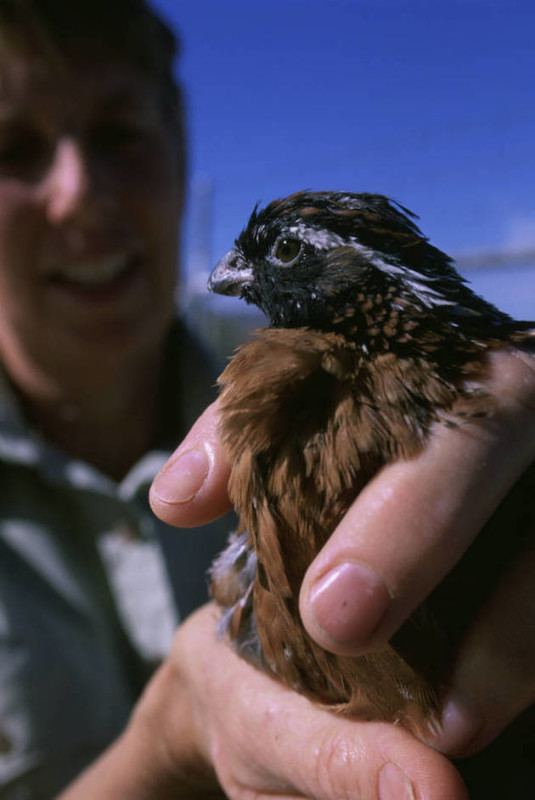
A masked bobwhite in the hand can help the birds in the bush.
At Patuxent, the birds remained the solitary captive stock for three decades. Meanwhile, the Buenos Aires National Wildlife Refuge was created in 1985, encompassing much of the known masked bobwhite quail range in the United States.
The refuge’s name literally means “good air” in Spanish, but implies that it is a place of human contentment or well-being. The landscapes of long vistas inspire. On a map, the masked bobwhite range in Arizona looks like the curved prongs of antelope’s rack jutting north only 50 miles from Sonora. The birds once occupied much of the Altar and Santa Cruz valleys of southern Arizona, now fully within the confines of the wildlife refuge.
Though the native range of the bird covers a large geographic area, actual habitat was rather limited. That seems to have been the case for a very long time, and therein sits the problem for masked bobwhites. They have a natural affinity for, if not an outright dependency on, flat, grassy llanos — plains covered in tall, dense native grasses with a sporadic short over-story of scrubby trees near stream courses. The grass provides hiding cover, nesting sites, and nutrient-rich food sources in seeds and bugs.
The shrubs yield perches for males to prominently display and proclaim aloud their iconic Bob-White whistle at breeding time. The call is indistinguishable from his eastern bobwhite quail cousins, incidentally.
The bird is a desert dweller. Its desired habitat exists in a climate of only 12 inches of precipitation per year, and most of that occurs as rain in a brief summer monsoonal season.
What falls from the sky determines a great deal for masked bobwhite quail. The summer rains, which usually commence the first week of July, prompt the birds to breed. It’s a curious artifact of ecology that masked bobwhite quail rely on the timing of the summer rains. They covey up until June, at which time the adults begin to form pair-bonds for the looming nesting season. When the summer rains start, the birds are on the nest and the males are singing their signature song near an otherwise well-concealed nest in deep grass below. The males may display like this until the middle of September.
The eggs start hatching as early as late July, but peak hatch occurs in September. There’s a pattern in the progression from mating to hatching to maturing, and it’s all related to rain. Dense grass and weeds are the concealing cover fed by rain, followed by the production of bugs and seeds for the young birds to eat coming right out of the nest. Broods may reach 15 in number and form the core of the fall coveys, often joined by strays. Coveys rarely exceed 20 birds.
As summer turns to fall and the rains subside, the birds shift to shrubby habitats. Diets shift as well, changing over to grasshoppers and green leaves. Summer rain determines herbaceous plant growth which influences nesting success, but the amount of concealing tall grasses and shrubs left over the winter have much to do with the survival to the next breeding season.
In a land with little rain, grassy habitats are vulnerable to destruction from the over-stocking of cattle. That, in fact, is what happened to masked bobwhite in 1880s. Large herds overgrazed southern Arizona and decimated quail habitat by denuding and erosion. Recovery has been a slow slog. Biologists at the refuge have kept their hands on the plow to improve the lot of masked bobwhite quail, beyond holding a captive stock which came from Patuxent in 1996. That captive stock now numbers approximately 900 birds.
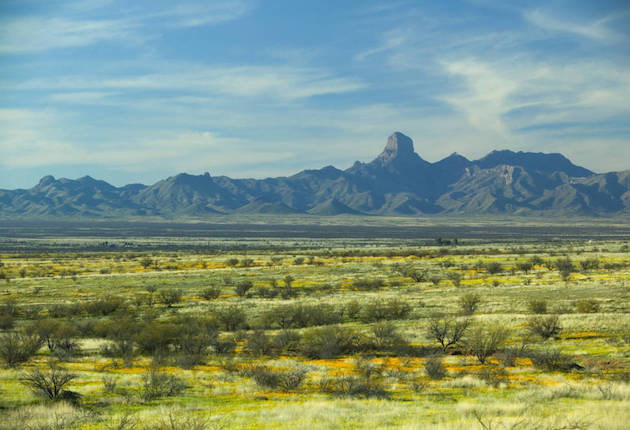
A landscape shot of the breathtaking Buenos Aires National Wildlife Refuge.
Refuge biologists strive to create more shrub habitat, as well as increase the extent of grassy areas the birds need. They have used prescribed burns and mechanical soil aeration to promote growth of desired vegetation. With respect to the captive birds, they will soon enjoy modified flight pens and conditioning pens so as to make what are arguably pen-raised birds better suited to face the rigors of the wild. Small coveys were last released on the refuge in early fall 2013 and tracked with radios for six weeks. The tracking yielded new information on habitat use and helped guide future habitat management. Over the coming summer, refuge biologists will attempt to count birds in Mexico by playing recorded bobwhite songs and listening for responses.
Perhaps the greatest promise comes in the new international relationship with Africam Safari and private landowners. In adjacent Sonora, two expansive private ranches with a keen interest in the quail may be the arena where great gains are made. Rancho San Dario and Rancho El Carrizo have been very involved in masked bobwhite for more than 50 years. Though beef cattle are their primary products, ecotourism, birding, and potential masked bobwhite recovery to numbers that could be hunted motivate the ranchers. In addition to ongoing habitat assessment in Mexico, refuge biologists and recovery team scientists intend to deploy dozens of automatic recording units to collect audio data on the two Sonoran ranches. Think of them as game cameras for the ear. The bobwhite’s call is so distinct it will be easy to detect on recordings that will occur around the clock. The data should yield not only the presence of the nesting birds, but could reveal a better picture of how widely the birds live just south of the border.
Masked bobwhite quail have gazed into the abyss of extinction. Diversifying the conservation portfolio, not putting all the eggs in one basket, as well as fostering partnerships that support masked bobwhite quail conservation are part of an essential path forward in conserving the imperiled bird. The dividend will be the blessing of summer birdsong bending toward your ear where it hasn’t been heard in decades. Imagine the startling skirr of wings as a covey of these native quail erupt from the tawny, grassy desert floor while the bright southwestern sun bounces back in deep chestnut off the bird’s breast. That would certainly add to the serenity — to the buenos aires — of the southwestern landscape.
To learn more, visit www.fws.gov/refuge/Buenos_Aires.
Craig Springer, External Affairs, U.S. Fish and Wildlife Service – Southwest Region, Albuquerque, New Mexico.
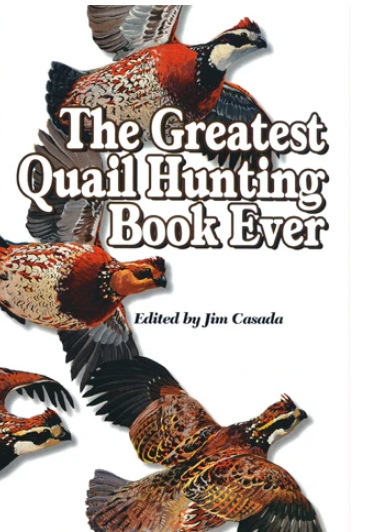 This fascinating anthology showcases 38 wonderful stories from those halcyon days when sporting gentlemen pursued the noble bobwhite quail with their favorite shotguns and their elegant canine companions.
This fascinating anthology showcases 38 wonderful stories from those halcyon days when sporting gentlemen pursued the noble bobwhite quail with their favorite shotguns and their elegant canine companions.
The 368-page book opens with compelling tales by the literary giants from quail hunting’s golden era, including Nash Buckingham, Robert Ruark, Havilah Babcock, Archibald Rutledge and Horatio Bigelow. Buy Now

